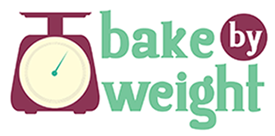 |
| Homemade Biscuits... Light, fluffy and delicious! |
I'll admit it. Regardless of my knowledge of baking or extensive baking skills, I have always had a weakness for biscuit mix... specifically, Pioneer Biscuit Mix. It's so quick and easy... with one product I can have biscuits, pancakes or waffles... easy peasy! I always feel guilty every time I get that lovely blue and golden box out of the pantry, but gosh-darn-it it is so E A S Y! Periodically, I've tried to find a good scratch recipe, but always found that easy and simple always won... ergo, the biscuit mix... sigh...
Anyhow, with my recent obsession with Americanizing the classic Victorian sponge cake, I find myself with self-rising flour on-hand at all times. Sooooo, I decided once again to re-visit finding a simple but delicious scratch biscuit recipe. This time, I searched for one that called for self-rising flour. As I hoped, I found a recipe that only had three ingredients... self-rising flour, shortening, and milk. Eureka! This was exactly what I was looking for. The biscuits were yummy... they were approved by my 7 year old (the toughest test of all)... and I always have the ingredients on hand!
It didn't take long for me to realize that I had stumbled upon my own version of a homemade biscuit mix. The combined flour and shortening, minus the milk, should basically be a biscuit mix, right? I decided to take it a step further and use this "biscuit mix" exactly as I had my old favorite, Pioneer Biscuit Mix. I used the same recipe measurements to make waffles and pancakes. They... were... awesome!
2 Ingredients for Your Own Biscuit/Baking Mix!
 |
| Self Rising Flour found in the baking isle of your grocery store |
 |
| Vegetable Shortening |
The Ratio - 5 to 1
Once I converted the recipe from the traditional "cups" measuring to weight, I discovered something amazingly simple. The flour to shortening ratio was 5 to 1 for the biscuit mix. No messy measuring of the shortening (something I have always loathed).... In this example, I used 10 ounces of self-rising flour and 2 ounces of shortening. (I have since discovered that I can get up to 20 ounces of flour and 4 ounces of shortening in my food processor! yay!!)
 |
Weigh 10 ounces of self rising flour (don't forget to tare/zero out the scale after you put the bowl on the scale, but before you weigh the flour)
|
 |
| Zero/Tare the scale then add 2 ounces of shortening. |
 |
| Put the flour and shortening in your food processor and pulse several times. |
 |
Your mixture should resemble slightly wet sand.
That's it! Now you've made your own biscuit mix. It has such a variety of uses, so don't be afraid to experiment.
|
Recipe for Biscuits and Pancakes/Waffles:
BISCUITS:
8 ounces of homemade biscuit mix
*6 ounces of milk (approximate)
* I find the amount of milk is very subjective, depending on how firm or soft you like your biscuit dough. A
4 to 3 ratio is a good starting point. Adjust per your preference.
In a medium sized bowl, combine biscuit mix and milk. Stir with a fork just until combined. DON'T over mix your dough or you will have tough biscuits! Pat out onto a floured surface to 1/2" thick. Cut with a biscuit cutter and transfer to a greased baking pan. Bake at 425 until golden brown (15 minutes or so depending on your oven).
Tip! One ounce of baking mix equals roughly 1 biscuit!
FYI - I get roughly 1 biscuit per ounce of biscuit mix.... (this, of course, depends on how thick you pat your dough out and how big you cut your biscuits). Notice - this is roughly a 4-3 ratio of biscuit mix to milk. With this knowledge, you can make as many or as few biscuits as you need!
PANCAKES AND WAFFLES
9 ounces of biscuit mix
12 ounces of milk (by weight or by volume - either way it's the same :)
2 eggs
(for a richer batter, you can add 1/2 ounce of melted butter per egg)
Whisk the ingredients together until you have a smooth batter. Don't over-mix. I prefer to mix and let the batter rest for 10 minutes or so before I pour on the griddle. For pancakes, I use a griddle heated to just under 300 degrees. I make my pancakes about 4-5" in diameter (that's the way my kids like them!).... I get about 15 pancakes with a full recipe.
For waffles, heat your waffle iron. Spray with cooking spray and pour the batter into the griddle. Cook per your waffle iron's instructions. And... enjoy!































